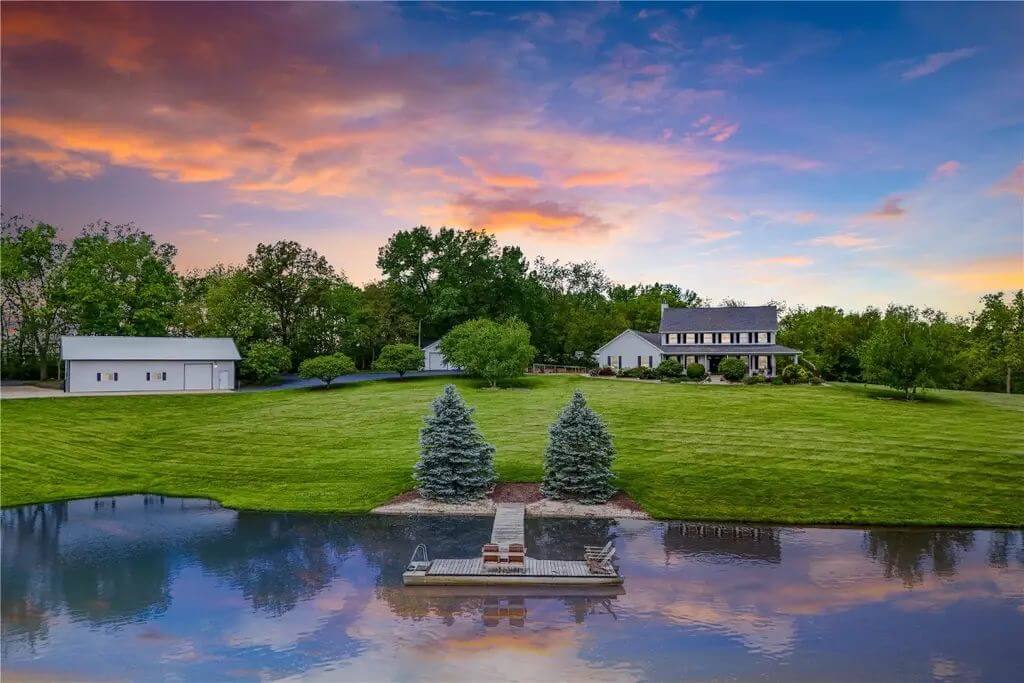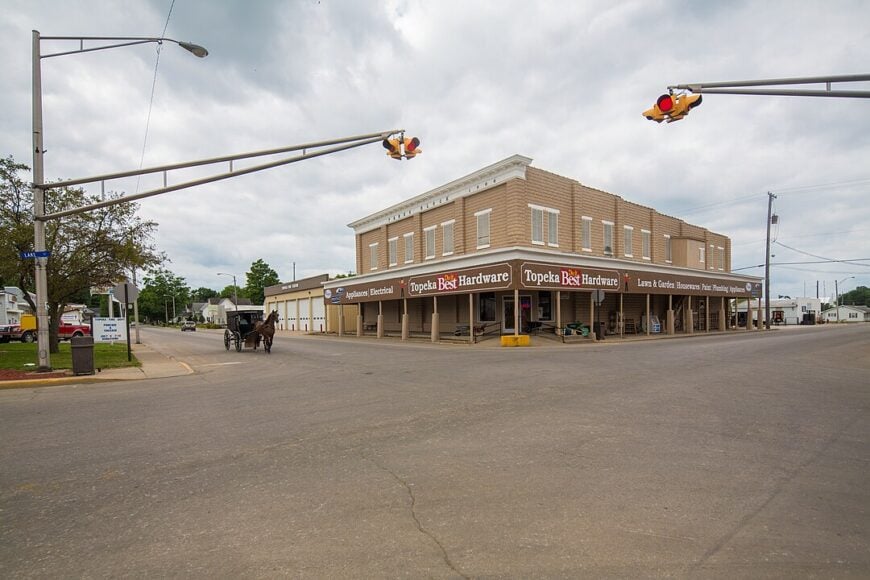
I’ve always been drawn to places where life moves a bit slower, where the hustle and bustle of the city fade into the background. Northern Indiana holds a special charm for me, with its quiet towns tucked away amidst rolling farmlands, serene lakes, and lush forests.
If you’re like me and crave a peaceful retreat, you’ll appreciate these 25 secluded towns that offer tranquil escapes from the everyday rush. From Amish country hamlets to lakeside hideaways, each of these communities provides its own unique slice of serenity.
Join me as we count down these hidden gems, uncovering the simple pleasures and secret spots that make them so special.
25. Mongo: A Canoe’s Starting Point

Mongo rests quietly in the northern Indiana countryside, nestled between wetlands, backroads, and a winding stretch of the Pigeon River that seems to wrap the town in stillness. With no major highways nearby and a population that barely clears 100, Mongo feels like a place nature chose to keep tucked away.
The village is rustic and peaceful, with simple homes, gravel drives, and a rhythm shaped more by river current than by time. Visitors come to paddle the Pigeon River, spot herons and turtles along the banks, hike the nearby trails of Pigeon River Fish & Wildlife Area, or browse seasonal crafts at the old trading post.
There’s no hustle here—just water, trees, and the few who’ve chosen this quiet life. Most locals are tied to conservation, recreation tourism, or nearby farming communities. It’s the kind of place that reminds you how seclusion can feel like sanctuary.
Where is Mongo?
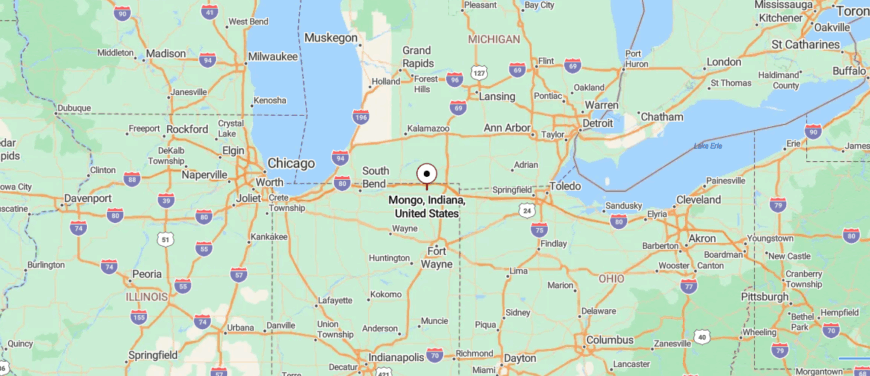
Mongo is an unincorporated community situated in LaGrange County, tucked into the gently rolling farmland of northeastern Indiana near the Michigan state line. It lies about 10 miles southwest of Lagrange (the nearest town) and roughly 40–45 miles south of Fort Wayne, quietly set off narrow county roads well away from major highways.
You reach Mongo by following two‑lane rural roads that weave through fields and patches of woodland before narrowing into quiet local lanes leading into its small cluster of historic homes and The Olde Store. It’s close enough for a peaceful countryside drive, but secluded enough that the hush of farmland and the breeze across open fields feel like the land itself has slowed down around you.
24. Wolcottville: Lakeside Stillness
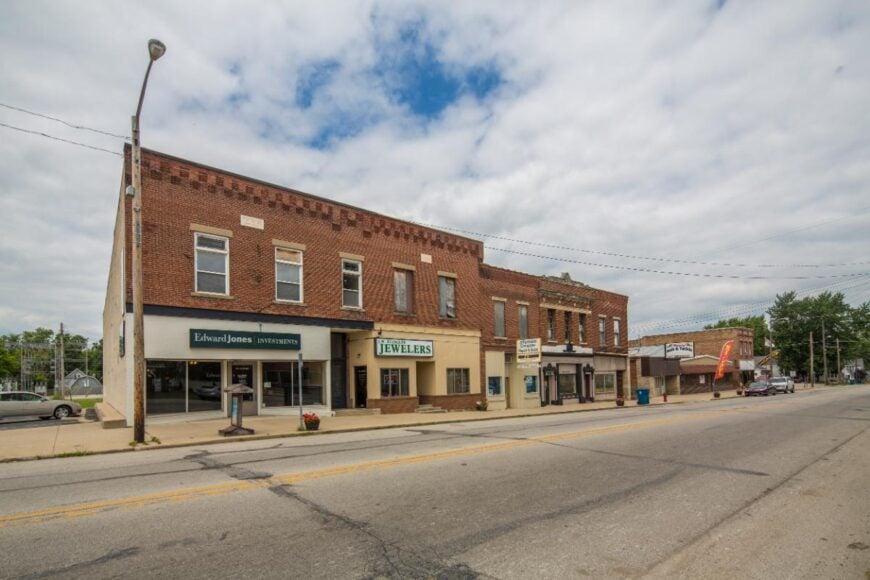
Wolcottville is tucked into the quiet lake country of northeastern Indiana, surrounded by winding country roads, wooded patches, and clusters of calm water that reflect more sky than noise. With just over 1,000 residents and no major highways nearby, it feels gently removed—resting in a pocket of slow days and wide views.
The town has a peaceful, lived-in feel, where boats bob at modest docks, porches face the breeze, and the rhythm of life follows the lake instead of the clock. Visitors can fish or kayak on Witmer Lake, bike the quiet backroads, explore local farm markets, or stroll through the shaded lanes that frame this lakeside village.
Seasonal tourism and small businesses keep the town afloat, but most here are drawn to the calm more than the commerce. Wolcottville doesn’t call attention to itself—it just welcomes those who notice. It’s the kind of place that reminds you how still the shoreline can be when life slows down.
Where is Wolcottville?
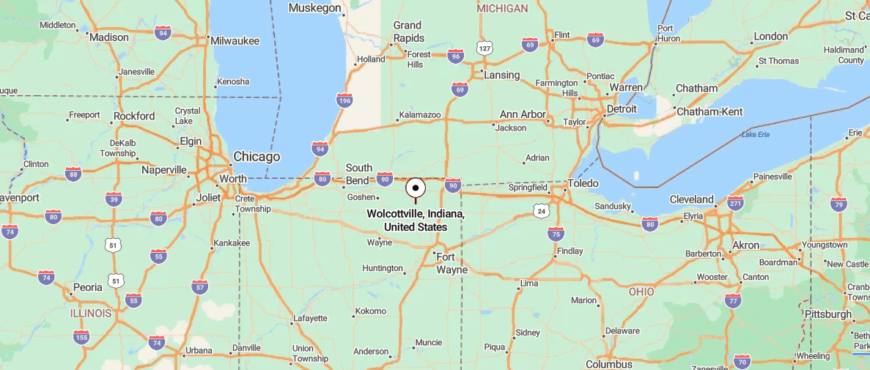
Wolcottville straddles Noble and LaGrange Counties, nestled in the gently rolling lake country of northeastern Indiana near the Michigan border. It lies about 36 miles south of Fort Wayne and roughly 45 miles east of Goshen, quietly accessed via narrow county roads rather than major highways.
You arrive via two‑lane rural routes that wind through lakeside farmland and wooded ridges, eventually turning onto quieter local lanes that lead to the village’s cluster of homes and small storefronts. It’s close enough for a leisurely day trip, yet far enough that the hush of lakes, fields, and forested hills feels like a quiet retreat held softly by the land itself.
23. Hudson: Between Fields and Sky
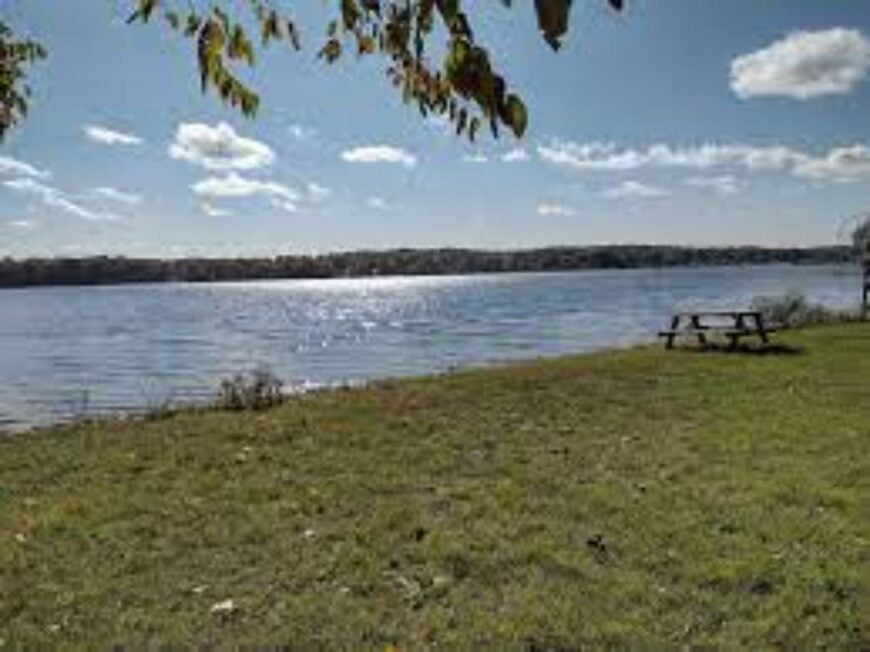
Hudson sits quietly in the northeastern corner of Indiana, surrounded by farmland, forest edges, and the kind of winding county roads where the horizon always seems just out of reach. With a population under 600 and no major highways nearby, the town feels tucked into its own quiet rhythm—unrushed and lightly traveled.
The atmosphere is simple and grounded, with wide lawns, old barns, and a silence broken only by passing tractors or the hum of summer insects. Visitors might take a scenic drive through the countryside, fish in nearby lakes, visit local antique shops, or catch a small-town festival that brings neighbors together on the square.
Most locals work in agriculture, trades, or commute to nearby towns, but life here is rooted in familiarity and space. Hudson doesn’t try to stand out—it’s content to remain steady and overlooked. It’s the kind of place that reminds you how comfort can live in quiet corners.
Where is Hudson?
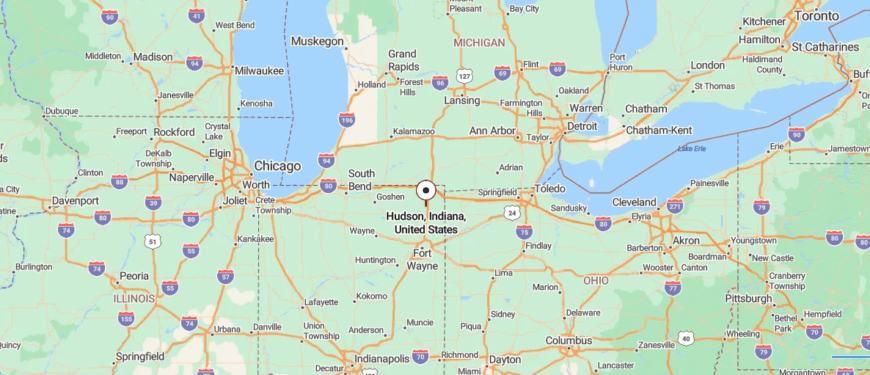
Hudson is located in Steuben County, nestled in the rolling farmland and lake country of northeastern Indiana near the Michigan state line. It lies about 10 miles south of Coldwater, Michigan, and roughly 40 miles north of Fort Wayne, quietly set off narrow county roads rather than major highways.
You reach Hudson by following two-lane rural routes that weave through fields, lakes, and tree-dotted ridges before narrowing into quiet local lanes that lead into its small cluster of homes and local businesses. It’s close enough for a peaceful countryside drive, but secluded enough that the gentle countryside hush and open spaces feel like a soft-hearted pause from the wider world.
22. Burr Oak: Forests and Forgotten Paths
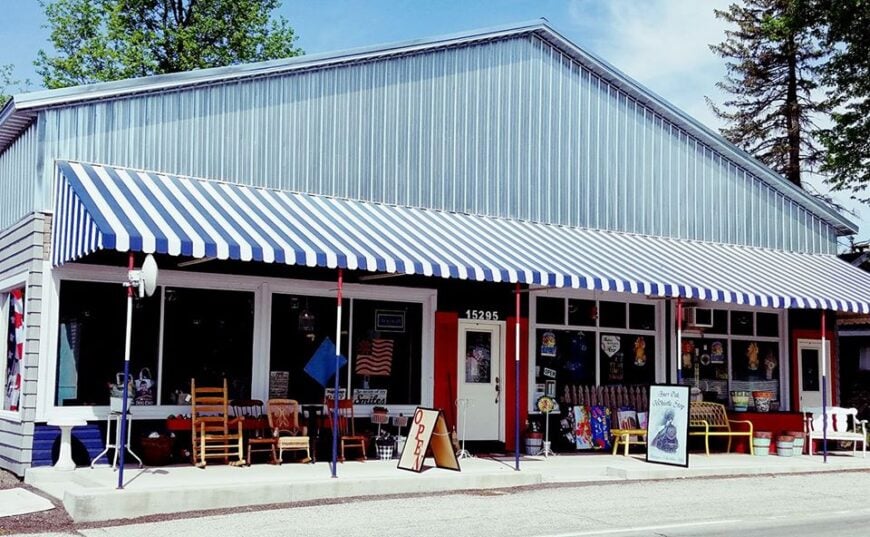
Burr Oak is a quiet speck on the map of northern Indiana, surrounded by endless rows of cornfields, narrow county roads, and the steady hush of open sky. With no major highways and only a handful of homes, it feels deeply tucked away—more like a memory than a destination.
The town carries a rural stillness, where farmsteads stretch into the distance, mailboxes lean along gravel lanes, and time seems to pass without hurry. Visitors might take a slow drive through the countryside, spot deer in the fields at dusk, fish in nearby ponds, or visit historic cemeteries that speak softly of the past.
Most who live here are farmers or tradespeople, tied to the land and the rhythm of the seasons. Burr Oak doesn’t make a sound—it just keeps going, quietly and steadily. It’s the kind of place that reminds you how solitude can feel like home.
Where is Burr Oak?
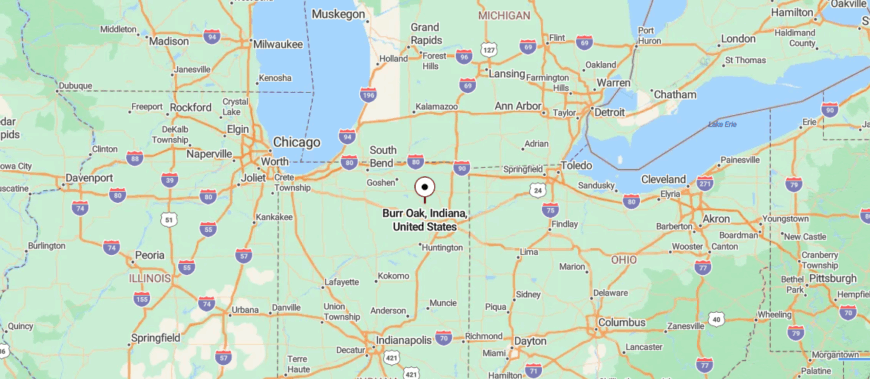
Burr Oak is located in Marshall County, tucked into the gently rolling farmland of northeastern Indiana near the Michigan state line. It lies about 10 miles northeast of Kendallville and roughly 45 miles southeast of Fort Wayne, quietly off the beaten path along county roads.
The journey takes you by two‑lane rural routes that weave through fields, small groves of trees, and occasional ponds before turning onto quieter lanes that guide you gently into the settlement. It’s close enough to reach on a peaceful afternoon drive, but secluded enough that the breeze through oak groves and the hush of open fields feel like a soft retreat held by the land itself.
21. Corunna: Small Town Stillness
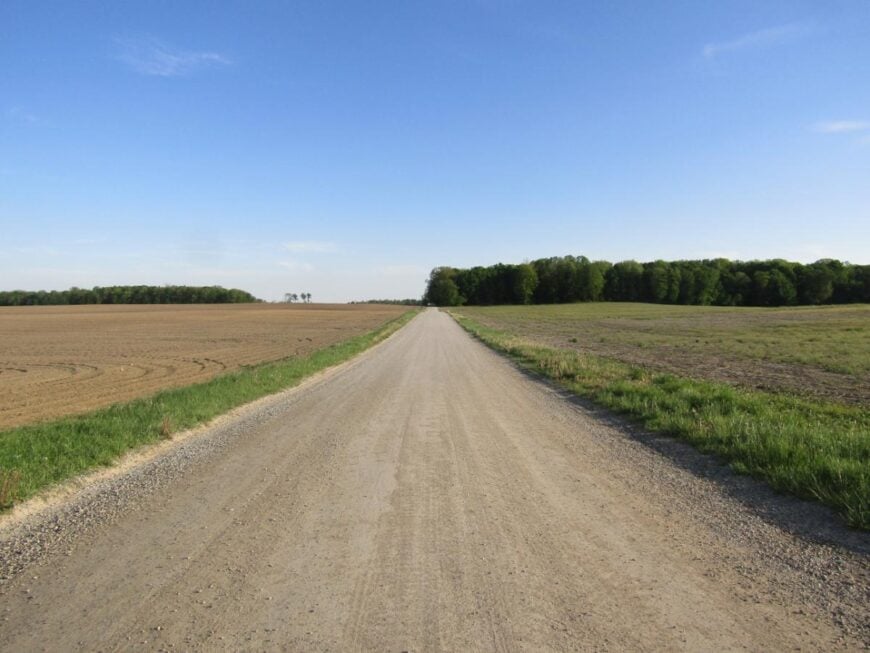
Corunna rests quietly in the flat countryside of northeastern Indiana, where railroad tracks, cornfields, and long gravel roads stretch farther than most travelers go. With a population of fewer than 300 and no major highways nearby, the town feels almost paused in time—small, steady, and softly hidden in the rhythm of rural life.
There’s a calm here: modest homes, an old grain elevator, and streets where the loudest sound might be a passing train or the wind through open fields. Visitors might take a country drive, explore nearby fishing spots, photograph aging barns, or chat with locals at the post office or roadside stand.
Most residents work in agriculture or commute to larger towns, returning each evening to the comfort of space and stillness. Corunna doesn’t rush, and it doesn’t try to stand out. It’s the kind of place that reminds you how quiet can still feel complete.
Where is Corunna?
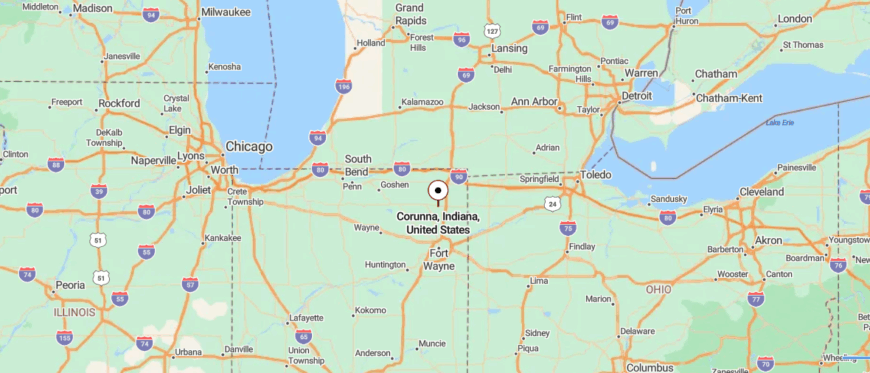
Corunna is located in DeKalb County in northeastern Indiana, nestled amid gently rolling farmland about 16 miles southwest of Fort Wayne and just off the quieter county corridors rather than major highways. The town sits approximately 7 miles east of Garrett and 6 miles northwest of Kendallville, placed in a rural pocket along local county roads.
You reach Corunna by following two‑lane state routes from Fort Wayne through open fields and hedgerow-lined lanes, then onto narrower township roads that lead into its small cluster of homes nestled in the countryside. It’s close enough for an effortless countryside drive, but quiet and removed enough that the gentle quiet of the fields and the soft rustle of wind feel like they’ve slowed time itself.
20. Mill Creek: By Water and Silence
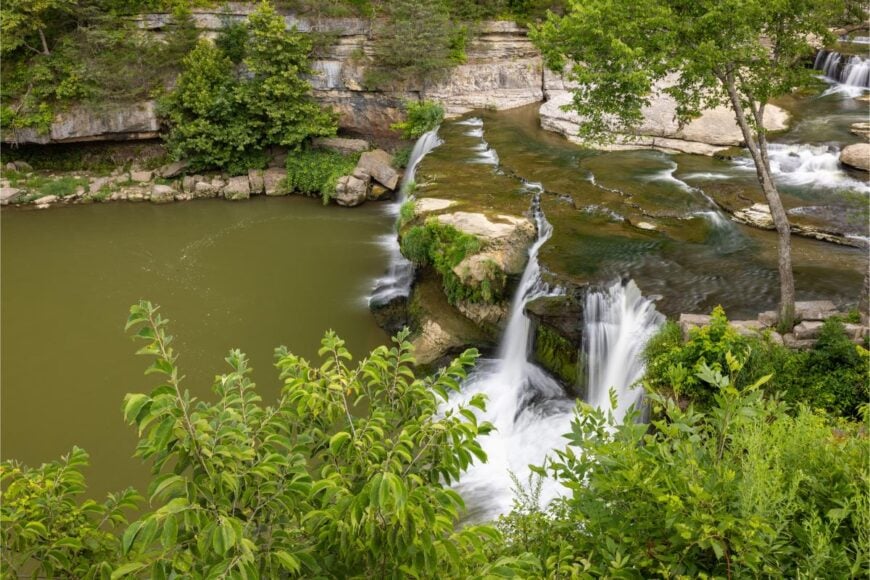
Mill Creek is nestled in the rolling farmland of northern Indiana, surrounded by wooded patches, old rail lines, and the soft curve of quiet backroads that lead more to fields than towns. With no major highways nearby and only a scattering of homes, it feels deeply tucked away—held in place by cornrows, creeks, and the steady hum of rural life.
The town’s vibe is peaceful and unpolished, where mailboxes lean along gravel lanes and barn roofs fade gently under the sun. Visitors might fish in Mill Creek itself, explore local trails, drive through historic farmland, or take in the stillness that settles over open fields at dusk.
Most locals farm or commute to nearby La Porte, choosing Mill Creek for the space, the silence, and the sense of being rooted. There are no shops or flashing signs—just land, sky, and a few slow-moving days. It’s the kind of place that reminds you how stillness can shape a life.
Where is Mill Creek?

Mill Creek is located in LaPorte County, nestled in the northwestern part of Indiana where farmland and scattered woodlands stretch across low ridgelines and quiet valleys. It sits about 10 miles southeast of La Porte and roughly 25 miles west of South Bend, quietly removed from highways and accessible via CR 875 E and surrounding rural routes.
The journey winds through open pastures, tree lines, and narrow county roads before easing into the village’s small collection of homes and silos. It’s close enough for a slow afternoon drive, but far enough that the stillness of the landscape wraps gently around you like a held breath.
19. Kingsbury: Railroads and Quiet Roads
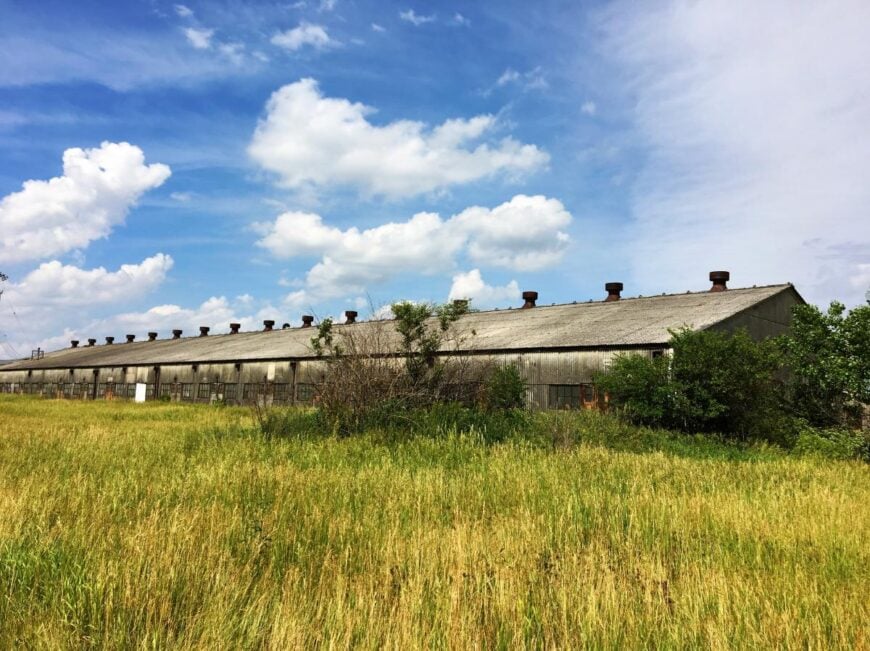
Kingsbury sits quietly in the open plains of northern Indiana, bordered by forest edges, grain fields, and a long stretch of sky that seems to settle over everything. With fewer than 250 residents and no major highways cutting through, the town feels tucked away—quiet, steady, and surrounded by space.
Once a bustling industrial stop, Kingsbury has returned to stillness, where rusted rail lines and quiet homes now define the rhythm of the day. Visitors can explore Kingsbury Fish & Wildlife Area, hike among the wetlands and woodlands, birdwatch along the marshes, or fish in one of the preserve’s hidden ponds.
A few small businesses and local farming keep life going, but most residents stay for the quiet or commute to nearby La Porte. Kingsbury isn’t flashy—it’s grounded, wide open, and perfectly slow. It’s the kind of place that reminds you how calm can fill the space where noise used to be.
Where is Kingsbury?
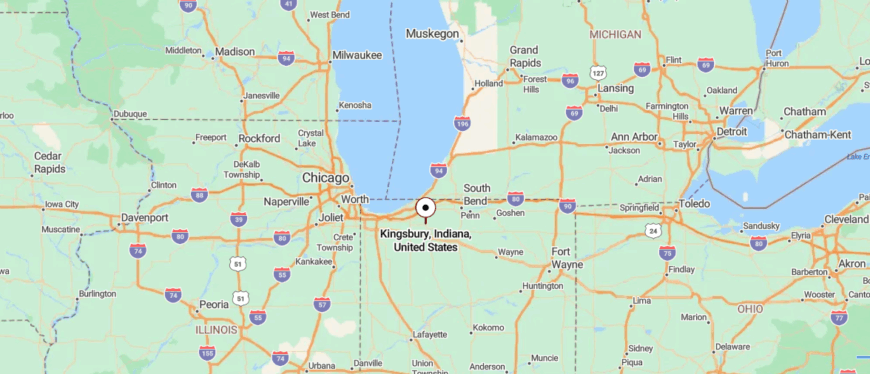
Kingsbury is located in Washington Township, LaPorte County, nestled in northwestern Indiana just below the Michigan state line, where farmland borders gentle woodlands. It sits about 6 miles southeast of La Porte and roughly 25 miles southwest of South Bend, quietly set off the main routes near the junction of U.S. Route 35 and U.S. Route 6.
You reach the town via two-lane rural roads that curve through open fields, scattered groves, and past the edges of the Kingsbury Fish and Wildlife Area before arriving in the modest cluster of homes and shops. It’s close enough for a relaxed weekend drive, but secluded enough that the quiet of the countryside and the surrounding preserve feel like a gentle invitation to unwind.
18. Claypool: Stillness Between Fields
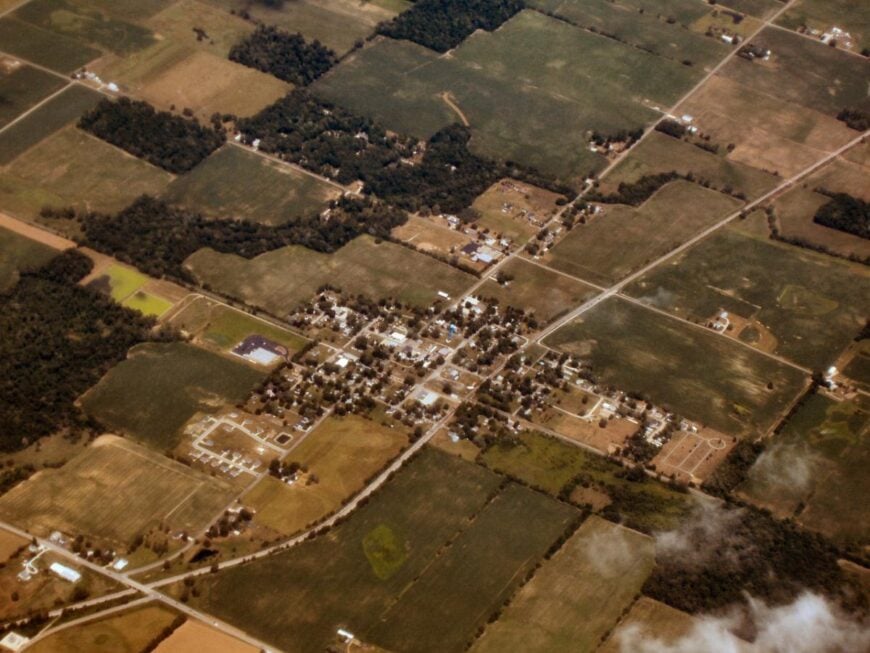
Claypool rests in the quiet farmland of northern Indiana, where long stretches of county roads pass silos, train tracks, and sky before arriving at the village’s still center. With just a few hundred residents and no major highways nearby, the town feels naturally tucked away—more connected to fields and grain elevators than to the outside world.
Life here moves gently, shaped by agriculture and the slow rumble of passing freight trains. Visitors can walk the old main street, fish in nearby ponds, photograph the historic train depot, or watch the golden hour settle over the fields.
Most locals farm or work in nearby towns, drawn back each evening by the comfort of open space and quiet streets. Claypool doesn’t try to change—it holds to what it knows. It’s the kind of place that reminds you how steady the world can feel when it’s left alone.
Where is Claypool?
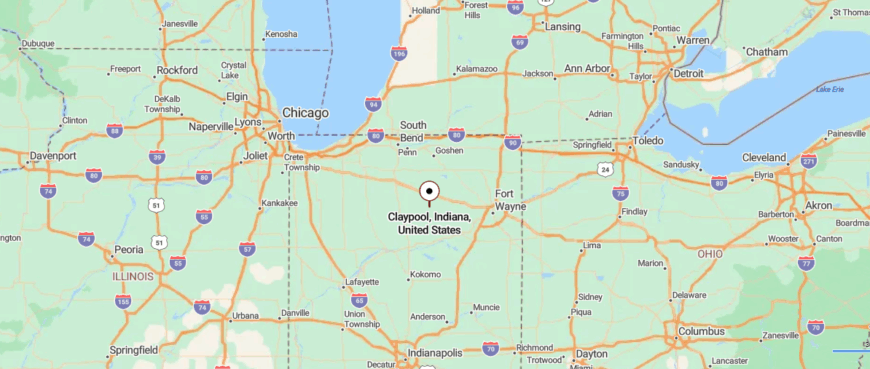
Claypool is located in southern Kosciusko County, nestled in north-central Indiana amid gently rolling farmland just south of the heart of Lake Wawasee and the region’s famous lake country. It sits about 10 miles west of Warsaw and roughly 40 miles south of Fort Wayne, quietly accessed off rural county roads rather than on major highways.
To reach the town, you follow two‑lane county routes that wind through open fields and stands of mature trees before easing into Claypool’s small cluster of homes and historic businesses at the old rail junction. It’s close enough for a tranquil afternoon drive, but far enough that the rhythm of country lanes and the hush of farmland feel like a kind of welcome slowed by the land itself.
17. Sidney: A Place Time Forgot
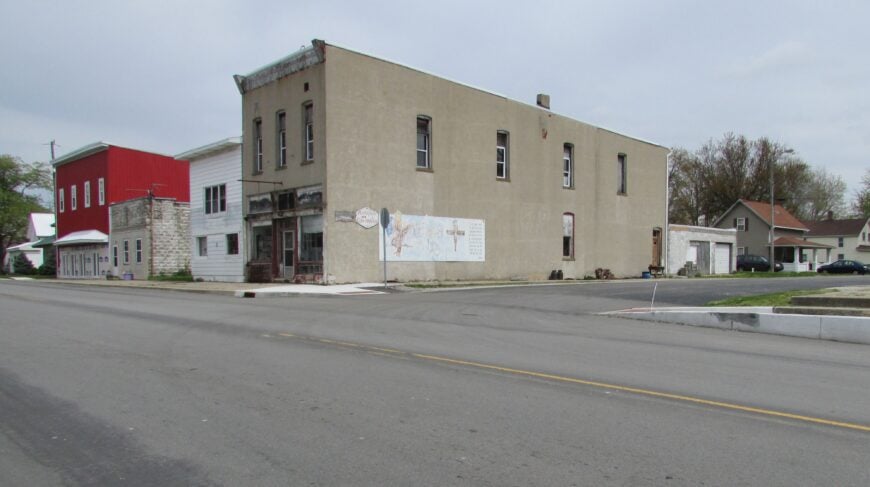
Sidney is a tiny town nestled in the quiet backroads of northeastern Indiana, where open fields meet tree-lined lanes and the world seems to slow at every turn. With fewer than 100 residents and no major highways in sight, it feels almost forgotten—tucked into farmland and stitched together by gravel roads and familiar names.
The town is still and modest, with a few old houses, a post office, and echoes of its railroad past lingering in the silence. Visitors might drive through for the views, stop to photograph old barns, fish in a nearby pond, or simply breathe in the space that surrounds it.
Most locals farm or commute to surrounding towns, living lives deeply tied to land and routine. Sidney doesn’t pretend to be more than it is—and that’s what makes it rare. It’s the kind of place that reminds you how quiet and space can still shape a home.
Where is Sidney?
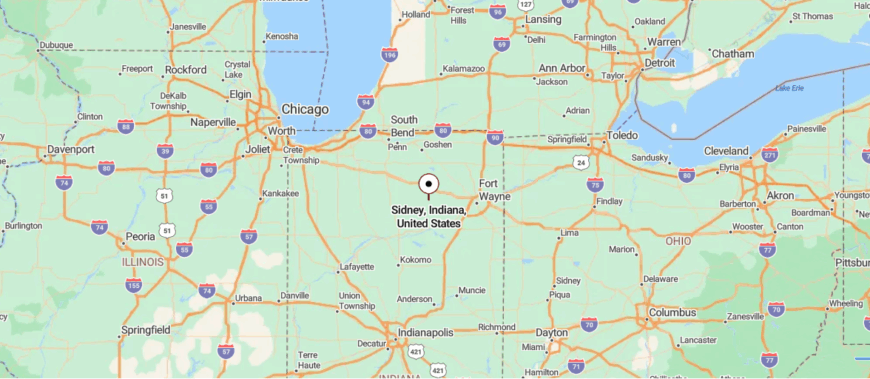
Sidney is located in Jackson Township, Kosciusko County, nestled in the gently rolling farmland of northeastern Indiana. It sits about 10 miles southeast of Warsaw quietly removed from major highways.
You reach the town via two‑lane rural routes that weave through open fields and scattered woodlots before narrowing into local lanes that lead into its small cluster of homes and silos. It’s close enough for a slow countryside drive, but far enough that the stillness of the landscape wraps gently around you like a held breath.
16. Roann: Covered Bridge Calm
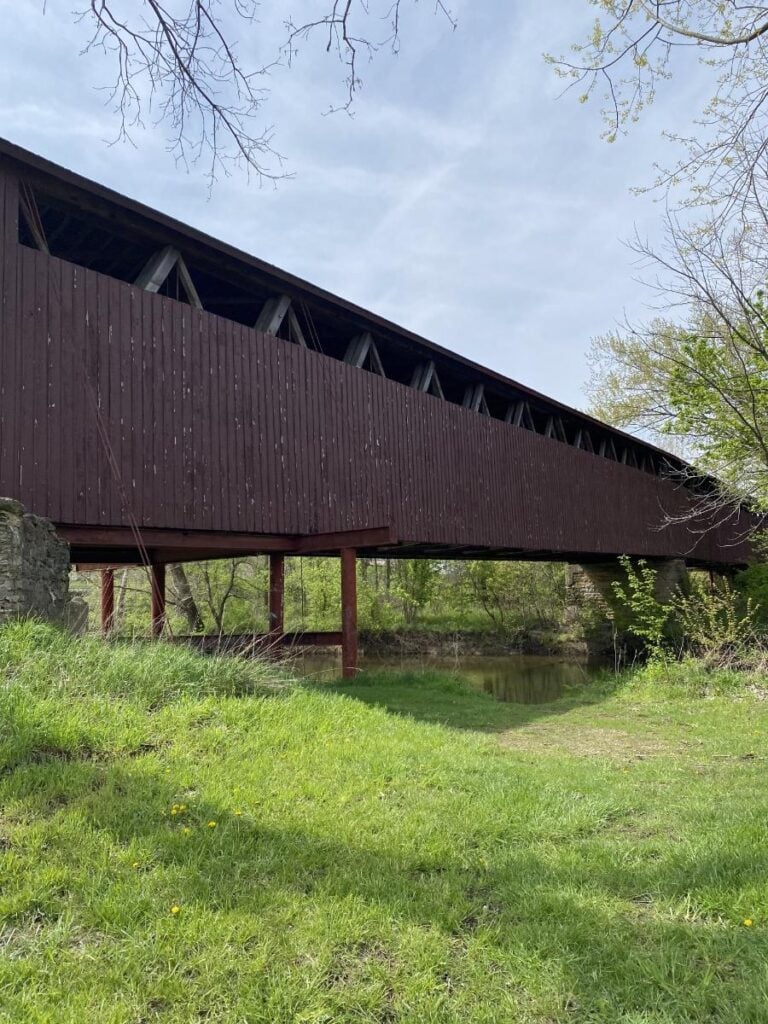
Roann is tucked beside the Eel River in northern Indiana, where wooded banks, covered bridges, and winding roads give it the feeling of a town gently held by time. With fewer than 500 residents and miles of quiet countryside separating it from major highways, Roann feels both hidden and historic—resting in the rhythm of its own slow days.
The town is rich with small-town charm: brick storefronts, a preserved 19th-century mill, and porches lined with flower boxes and rocking chairs. Visitors can walk across the iconic Roann Covered Bridge, tour the Stockdale Mill, attend the annual Roann Covered Bridge Festival, or stroll river trails surrounded by sycamores and birdsong.
Farming and local craftsmanship still ground the community, passed down across generations. Roann doesn’t reach for the future—it holds onto the best of what’s already here. It’s the kind of place that reminds you how history and peace can live quietly side by side.
Where is Roann?
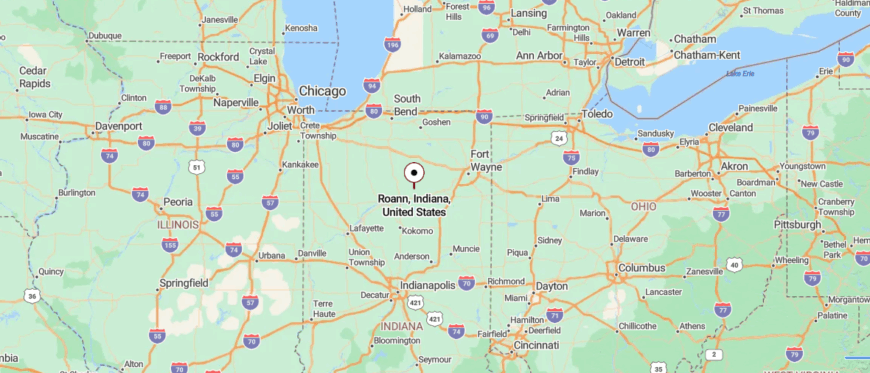
Roann is located in Wabash County, nestled in the quiet heart of north‑central Indiana along the tree‑lined banks of the Eel River. It sits about 35 miles north of Logansport and roughly 90 miles north of Indianapolis, quietly set off State Road 16 amid gently rolling farmland and wooded lowlands.
You reach the town by following the two‑lane country highway through open fields and riverside groves, then turn onto smaller rural roads that wind toward its historic mill, covered bridge, and shaded downtown district. It’s close enough for a leisurely drive, but secluded enough that the soft rush of the river and the hush of the bridge embankments feel like a whispered invitation into a quieter time.
15. Bourbon: Small Town Classic
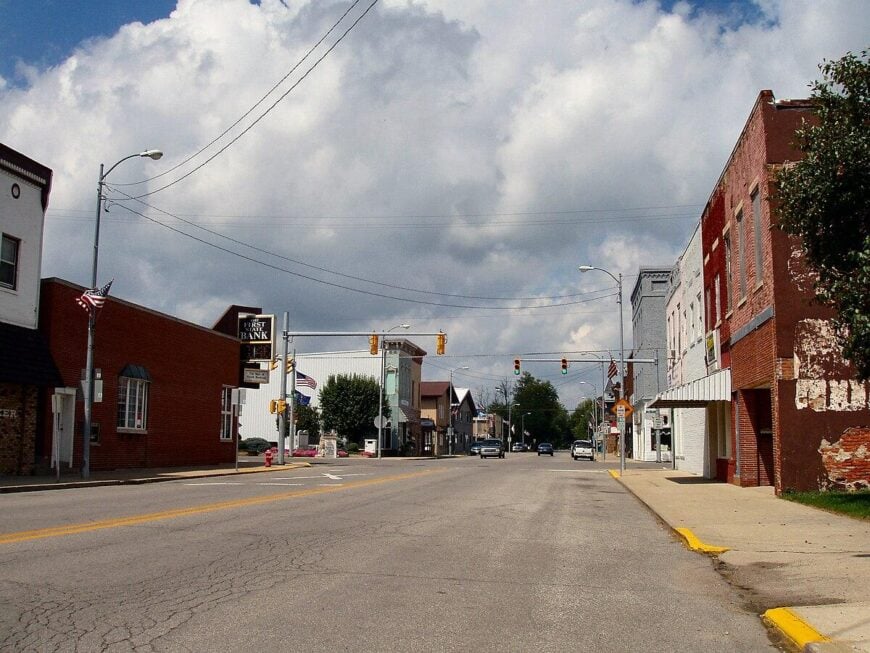
Bourbon sits quietly in the open farm country of northern Indiana, where flat fields stretch to the horizon and narrow roads lead you gently into town. With just over 1,600 residents and no major highways running through its heart, Bourbon feels peacefully removed—tucked between cornfields and carried by the rhythm of small-town life.
The streets are calm and familiar, lined with old brick storefronts, shaded porches, and a water tower watching over it all. Visitors can explore the historic downtown, walk the quiet path around Centennial Park, stop into a local diner, attend the Bourbon Summer Fest, or take a scenic drive past weathered barns and open skies.
Agriculture and light manufacturing support the town, but its real foundation is the slow, steady pace that never rushes. Bourbon doesn’t ask for attention—it offers a sense of place. It’s the kind of town that reminds you how peace can thrive in the in-between.
Where is Bourbon?
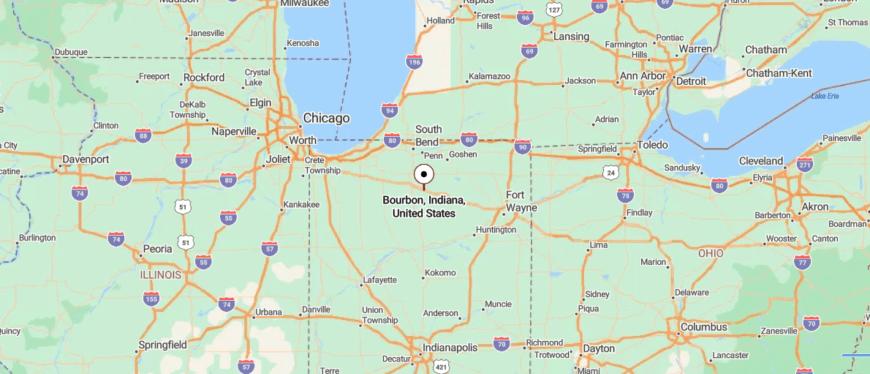
Bourbon is located in Marshall County, positioned in north-central Indiana where farmland gives way to a quiet patchwork of woodlots and low rolling hills. It sits about 13 miles southeast of Plymouth and roughly 50 miles southwest of South Bend, quietly set off state roads rather than major highways.
You reach the town via two-lane county and state routes that wind through open fields and past silos and farmsteads before easing into Bourbon’s tidy main street and small residential blocks. It’s close enough to reach by a relaxed country drive, but secluded enough that the hush of distant hills and the simplicity of early Indiana architecture feel like a soft invitation to slow the pace down.
14. Mentone: The Egg Basket’s Stillness
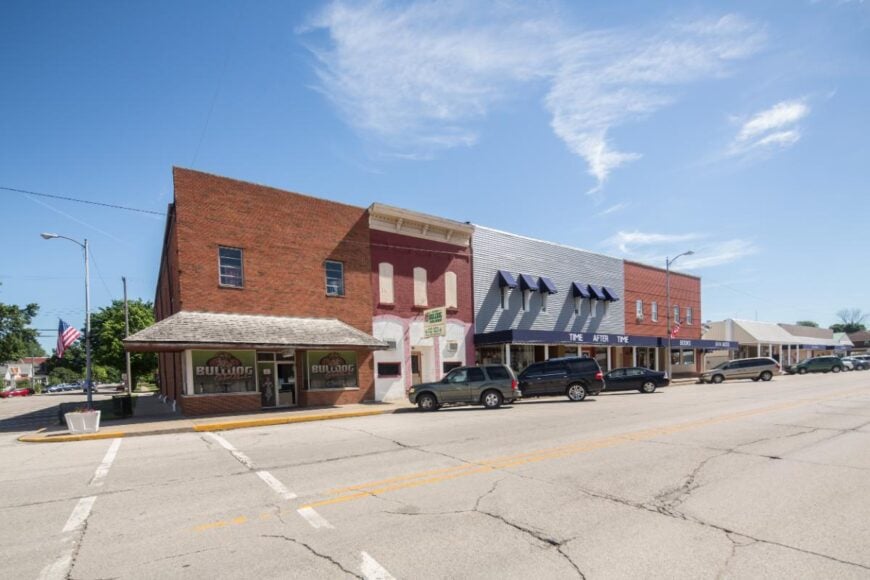
Mentone rests in the quiet farm country of northern Indiana, where two-lane roads and endless rows of corn seem to fold the town gently into the landscape. With just over 900 residents and no major highways nearby, it feels comfortably tucked away—easy to miss unless you’re looking, but hard to forget once you arrive.
Known as the “Egg Basket of the Midwest,” the town moves with a slow, grounded rhythm shaped by agriculture and tradition. Visitors can stroll the peaceful main street, stop by the Egg Museum, picnic in Mentzer Park, attend the annual Egg Festival, or drive the countryside where old silos and barns break the horizon.
Most residents work in farming, local trades, or commute to nearby towns, always returning to the calm that Mentone quietly keeps. There’s no rush here, only space to breathe and time to stay still. It’s the kind of place that reminds you how quiet can feel like coming home.
Where is Mentone?
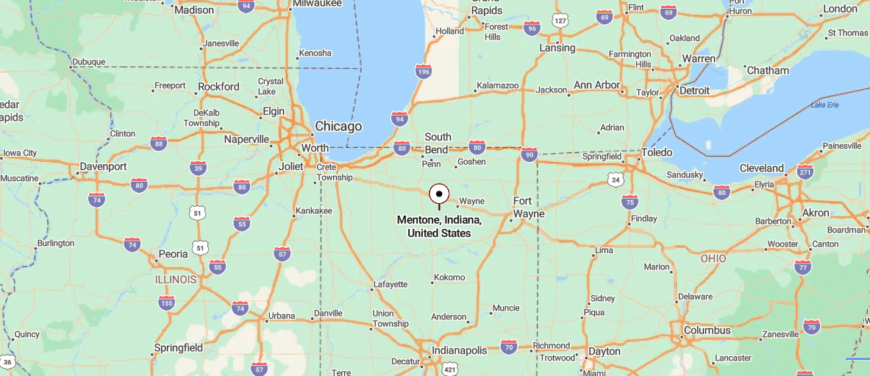
Mentone is located in Kosciusko County in north-central Indiana, nestled within quiet farmland and gentle low ridges just south of the Michigan state line. The town lies about 10 miles southeast of Warsaw and roughly 55 miles west of Fort Wayne, quietly set off rural county roads rather than major highways.
You reach Mentone by traveling along two‑lane county routes that weave through open fields, past silos and pastureland, then arrive at its small downtown marked by historic storefronts and its iconic oversized egg monument. It’s close enough for a comfortable afternoon journey, but far enough that the slow rhythm of farmland and the gentle hush around town feel like a welcoming pause from the wider world.
13. Argos: Historic Simplicity
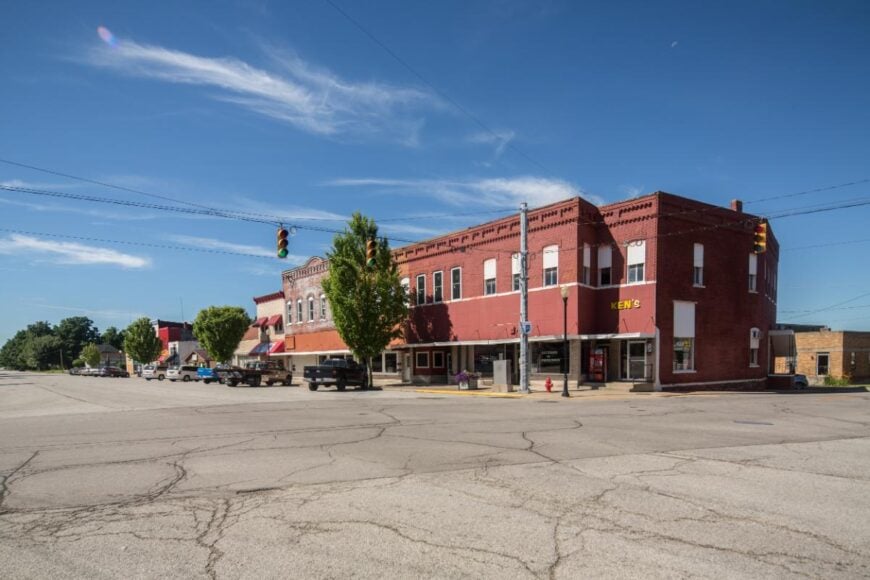
Argos is nestled in the quiet farmland of northern Indiana, where U.S. 31 skirts past but never disturbs the still rhythm of the town itself. With just over 1,700 residents and wide stretches of countryside in every direction, Argos feels softly set apart—resting between open fields, tree-lined streets, and skies that seem to stretch forever.
The town has a timeless, grounded feel, with a central square, historic buildings, and quiet corners where the past lingers gently. Visitors can explore the Argos Community Park, walk through the town’s charming downtown, fish or paddle at nearby Mill Pond, attend the Argos Summer Kickoff Festival, or take in a high school ballgame where everyone knows each other.
Farming and small businesses anchor the community, providing steady roots for a life lived close to land and family. Argos doesn’t try to impress—it simply welcomes you in. It’s the kind of place that reminds you how calm and connection go hand in hand.
Where is Argos?
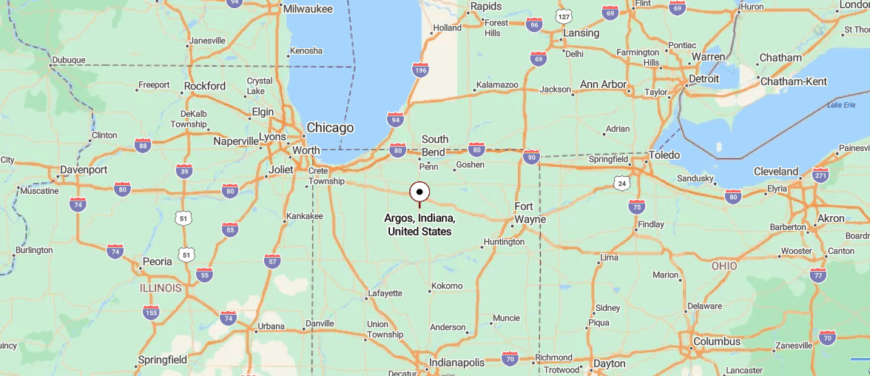
Argos is located in Marshall County in the northern reaches of Indiana, nestled along historic Michigan Road where rural farmland meets oak-lined country lanes. It lies about 10 miles southwest of Plymouth and roughly 60–70 miles south of South Bend, quietly set off former major routes rather than modern interstates.
You reach the town by traveling rural two‑lane highways that wind through fields, small vineyards, and hedgerow-lined pastures before descending into Argos’s compact historic core of limestone storefronts and shaded streets. It’s close enough for a peaceful country drive, but secluded enough that the hush of oak groves and the calm of small-town pride make it feel like a quietly grounded retreat.
12. Hamlet: Quiet Crossroads
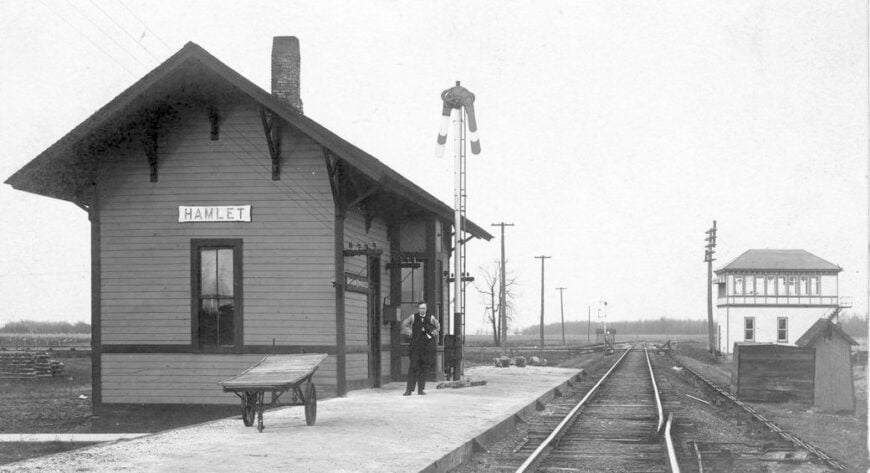
Hamlet is tucked into the quiet farmland of northern Indiana, where railroad tracks, wide fields, and distant tree lines create a sense of calm isolation. With just over 800 residents and no major highways cutting through its heart, the town feels gently removed—hidden in plain sight and shaped by the rhythm of land and season.
There’s a simplicity here: a small cluster of homes, a grain elevator rising over the fields, and streets where conversations still happen from front porches. Visitors can stroll through the quiet town square, explore nearby parks, fish in local ponds, or drive the scenic country roads that surround the village in every direction.
Most residents farm or work in nearby towns, returning each evening to the peace that Hamlet quietly offers. It’s not flashy or fast—it’s steady, familiar, and deeply rooted. It’s the kind of place that reminds you how stillness can feel like belonging.
Where is Hamlet?
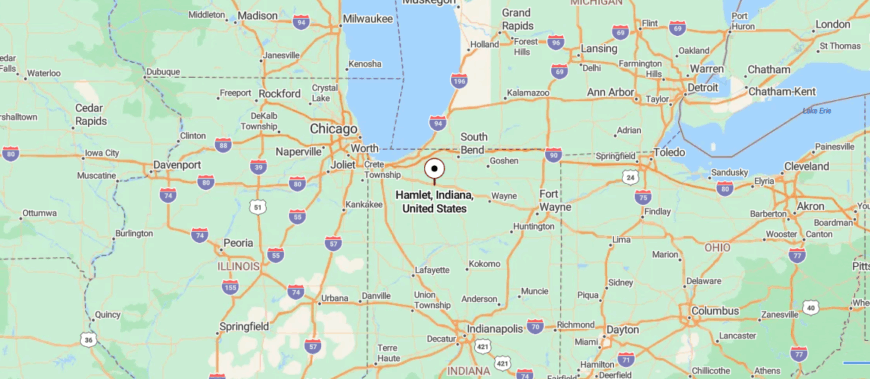
Hamlet is located in Starke County, nestled in the quiet farmland of northwestern Indiana amid gently rolling farmland lightly framed by woodlots and the northern edge of the Tippecanoe River basin. It lies about 10 miles southwest of Rochester and roughly 75 miles north of Indianapolis, quietly set off state highways and reached via narrower county roads.
The journey flows along gently curving two‑lane rural routes through open fields, past old barns and silvery treelines, before gently easing into Hamlet’s compact residential core and park-like main street. It’s close enough for an effortless countryside drive, but distant enough that the stillness of the land and the soft rustle of breeze in soybean fields feel like an invitation to pause.
11. Etna Green: A Pause on the Map
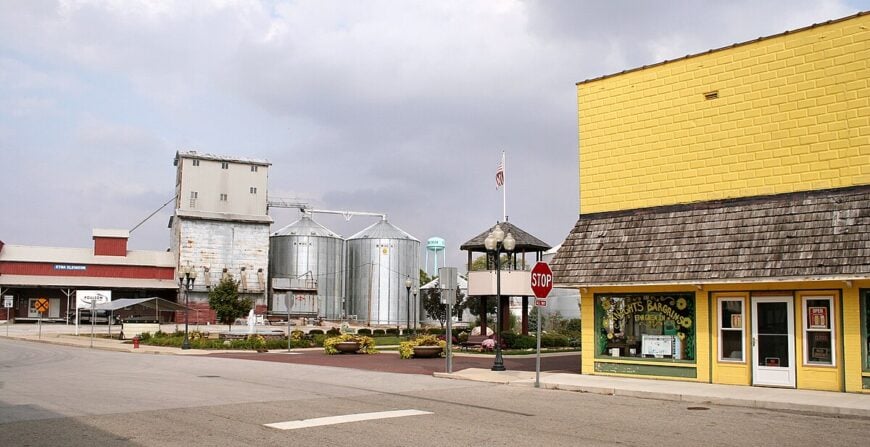
Etna Green rests quietly in the open farmland of northern Indiana, where long county roads stretch between fields and the town rises gently out of the landscape like a memory. With fewer than 600 residents and no major highways running through, it feels naturally tucked away—surrounded by silence, space, and the hum of rural life.
The town itself is modest and peaceful, with a grain elevator, a few storefronts, and wide lawns that slope beneath big sky. Visitors can take a country drive, explore the town park, catch a local ballgame, visit nearby antique shops, or watch the sun set over the rows of corn.
Most who live here farm or work in nearby towns, drawn back each day by the calm and familiarity Etna Green quietly keeps. There’s no rush, no noise—just a steady rhythm that never asks for more than presence. It’s the kind of place that reminds you how contentment grows best where everything else slows down.
Where is Etna Green?
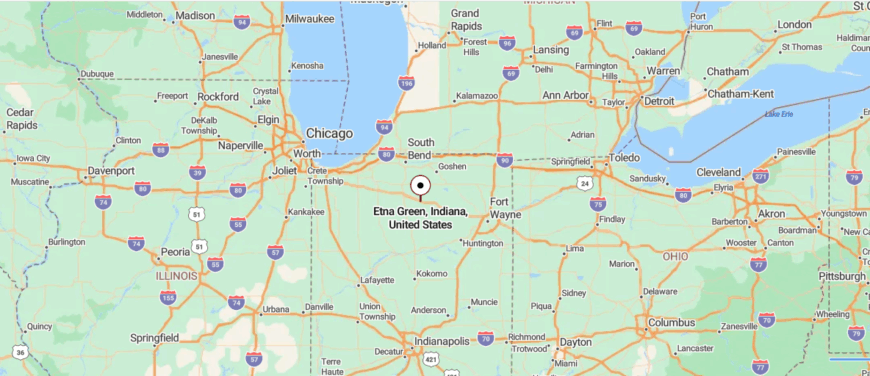
Etna Green is located in Kosciusko County in north-central Indiana, tucked into the western edge of the county where rolling farmland meets quiet tree lines in a small, rural pocket. The town lies about 11 miles west of Warsaw and roughly 40 miles south of South Bend, and it is reached via winding county roads rather than major highways.
The journey travels through gently undulating fields dotted with silos and groves, narrowing onto quieter township lanes that lead into the town’s modest cluster of homes and historic grain elevator. It’s close enough for a leisurely afternoon drive, but secluded enough that the stillness of fields and the hum of the countryside wrap around you like a soft exhale.
10. Millersburg: Escape to the Countryside
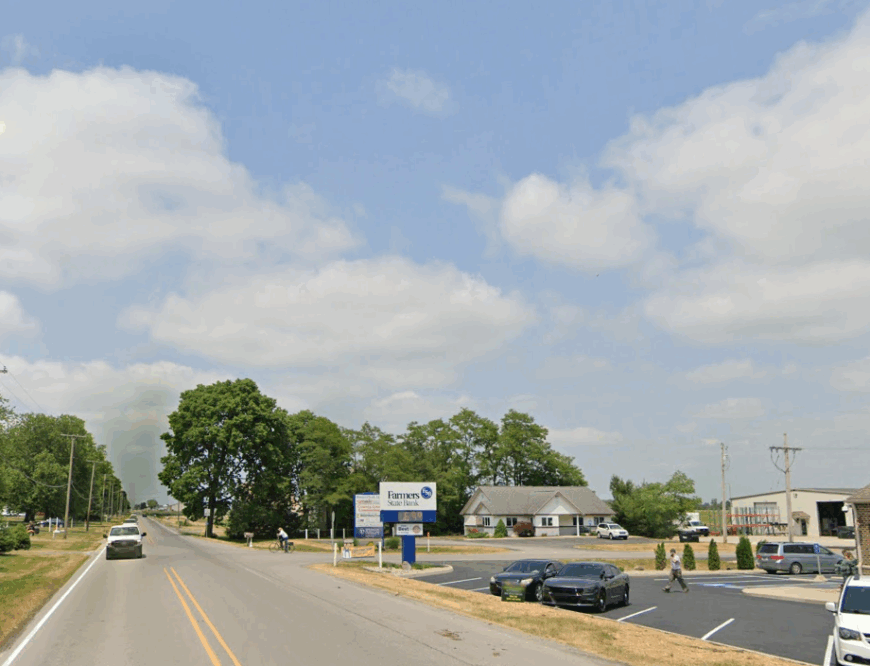
Millersburg, with a population of just over 900, is one of those places where you can truly disconnect and breathe in the fresh country air. Strolling through its quiet streets, you can’t help but feel a sense of peace that’s hard to come by elsewhere.
The town is surrounded by expansive agricultural fields, offering the perfect backdrop for leisurely drives or bike rides. One of our favorite spots is the local heritage park, where community events bring together residents in a friendly, down-to-earth atmosphere.
Millersburg doesn’t have bustling industries, but small family-owned businesses and farming are the heart of the town’s economy. Its seclusion lies in its simplicity and the vast natural landscapes that cradle this quaint community, far removed from the rush of urban life.
Where is Millersburg?
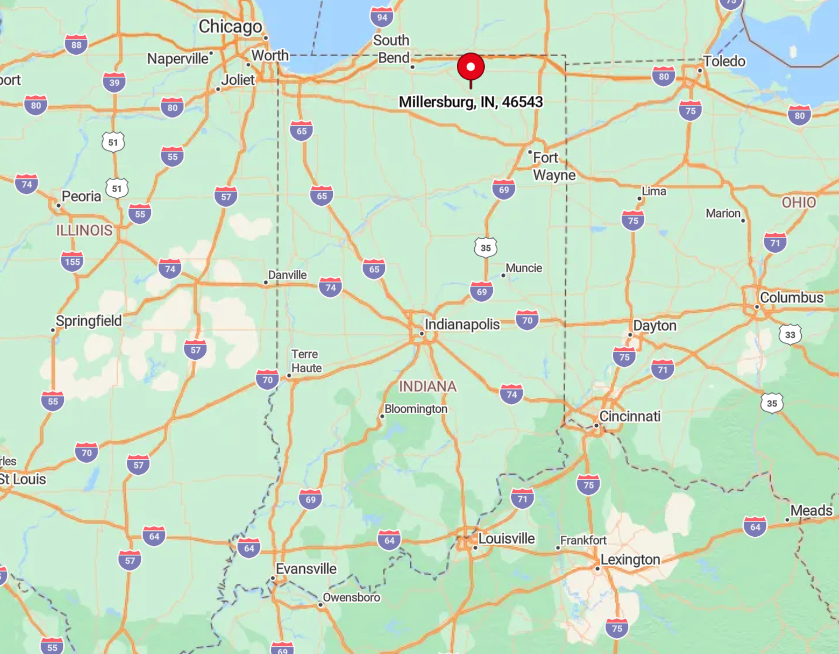
Nestled in Elkhart County in northern Indiana, Millersburg sits comfortably off the beaten path. Its location away from major highways and cities contributes to its quiet charm, making it a perfect countryside retreat.
Getting there involves a scenic drive through rolling farmlands, which I find to be a delightful part of the journey. The town’s remote setting, surrounded by acres of agricultural land, ensures that it remains a peaceful haven for those seeking solitude in the countryside.
9. Fremont: Serenity Near the Lakes
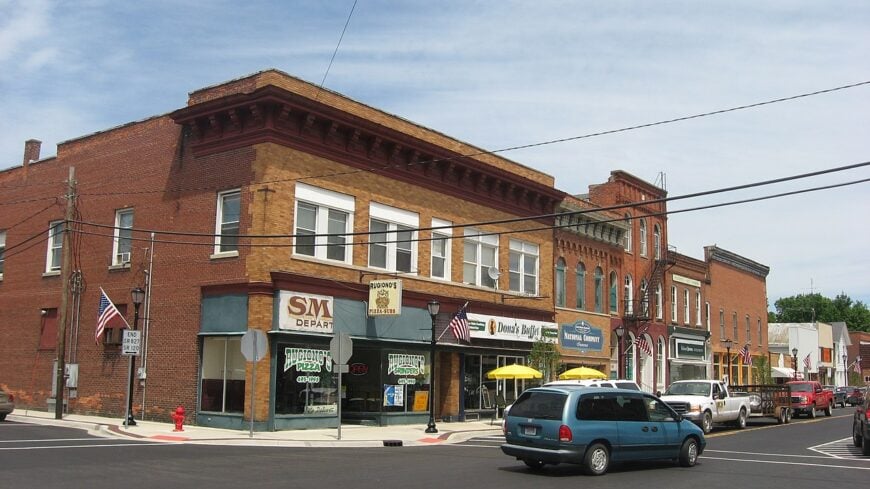
Fremont is a small town of approximately 2,000 people, and it’s one of my favorite getaways when I need to unwind by the water. Nestled near the beautiful lakes of northeastern Indiana, including Lake James and Snow Lake, Fremont offers ample opportunities for boating, fishing, and simply soaking in the serene lake views.
The town itself is charming, with local shops and eateries that give you a taste of the tight-knit community. While tourism and recreation play a part in the local economy, Fremont maintains its secluded feel thanks to the surrounding lush forests and farmlands.
The minimal traffic and abundance of undeveloped land make it an ideal spot for those who cherish tranquility.
Where is Fremont?
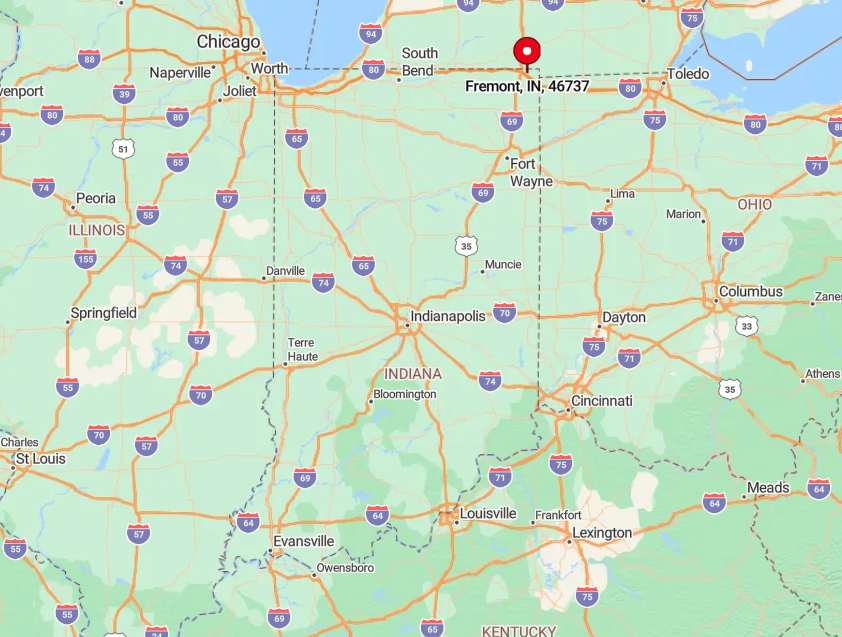
Located in Steuben County at the northeastern corner of Indiana, Fremont is just a stone’s throw from the Michigan and Ohio borders. Its position away from major urban centers adds to its peaceful ambiance.
I usually take Interstate 69 and then enjoy a relaxing drive through country roads to reach this lakeside haven. The town’s proximity to pristine lakes and its enveloping natural landscapes provide a secluded setting that’s perfect for a quiet retreat.
8. North Liberty: Gateway to Nature
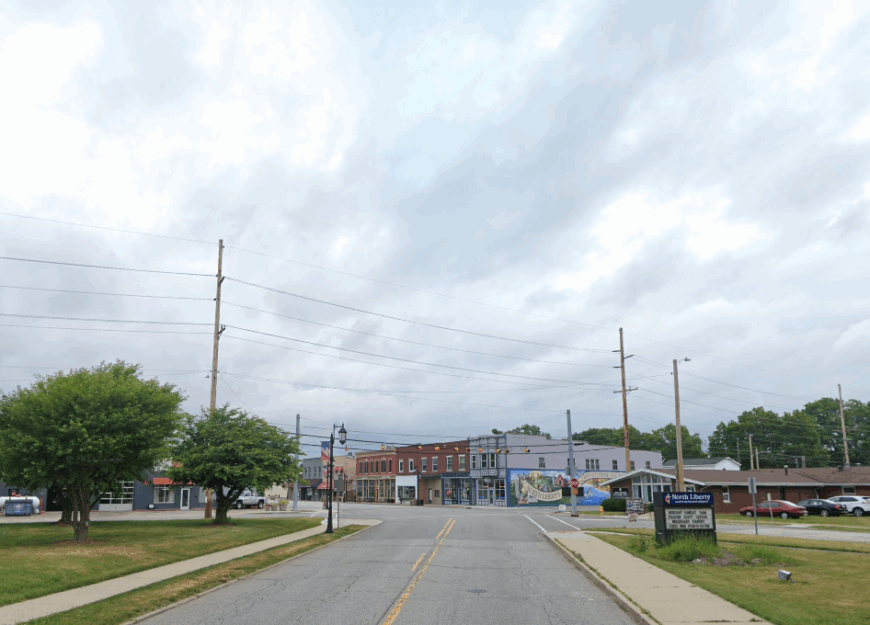
With a population hovering around 1,900, North Liberty is a small town that serves as a perfect gateway to nature’s wonders. One of my cherished spots here is the Potato Creek State Park, which offers miles of trails for hiking, biking, and horseback riding.
Birdwatching is a popular activity, and I’ve spent countless hours marveling at the diverse wildlife. The town itself exudes a peaceful vibe, with friendly locals and low housing density that contribute to its secluded atmosphere.
Where is North Liberty?
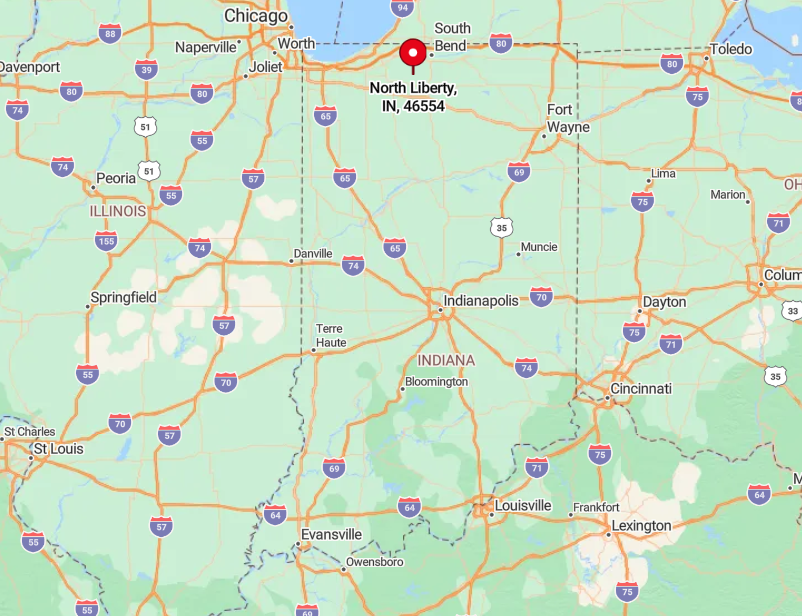
Situated in St. Joseph County, North Liberty is tucked away in northern Indiana, south of South Bend. Its seclusion is amplified by the surrounding natural landscapes and absence of major highways cutting through the town.
To get there, I usually take U.S. Route 31 and then enjoy a quieter drive along State Road 4, letting the expansive fields and forests signal that I’m leaving the bustle behind. The town’s proximity to extensive parklands makes it feel like a hidden gem waiting to be explored.
7. Union Mills: A Peaceful Hamlet
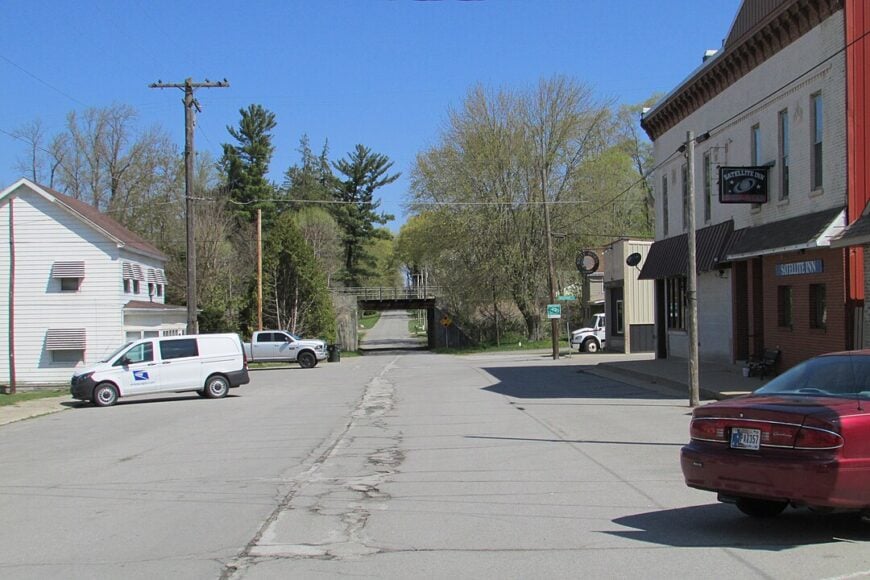
Union Mills is one of those places where time seems to stand still, and with a small population, it truly feels like a peaceful retreat. Surrounded by vast farmland and natural barriers like the Kankakee River, this unincorporated community offers a quiet atmosphere that’s hard to find these days.
I love visiting the local grain mill, a nod to the town’s historical roots, and the Union Mills Conservation Club is a hidden gem for outdoor enthusiasts like me.
Agriculture dominates the local economy, reinforcing the rural character and slow-paced lifestyle. Union Mills’ seclusion is accentuated by its low population density and the expanse of nature that envelops it.
Where is Union Mills?
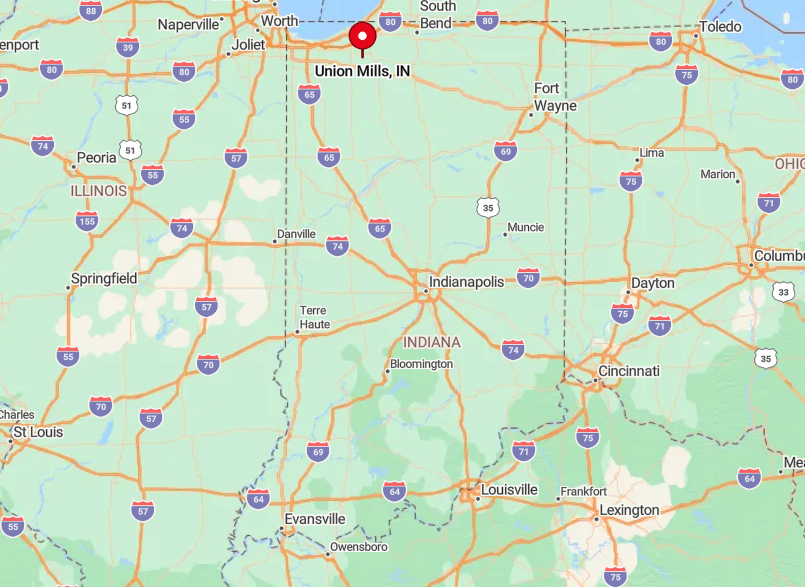
Located in LaPorte County in northwest Indiana, Union Mills sits comfortably away from bustling cities. Its setting amidst expansive agricultural lands and away from major roads makes it feel truly tucked away.
To reach this hamlet, I usually navigate through a network of quiet country roads, enjoying the scenic views along the way. The combination of natural barriers and minimal development ensures that Union Mills remains a tranquil spot where one can genuinely unplug.
6. Topeka: Timeless Tranquility
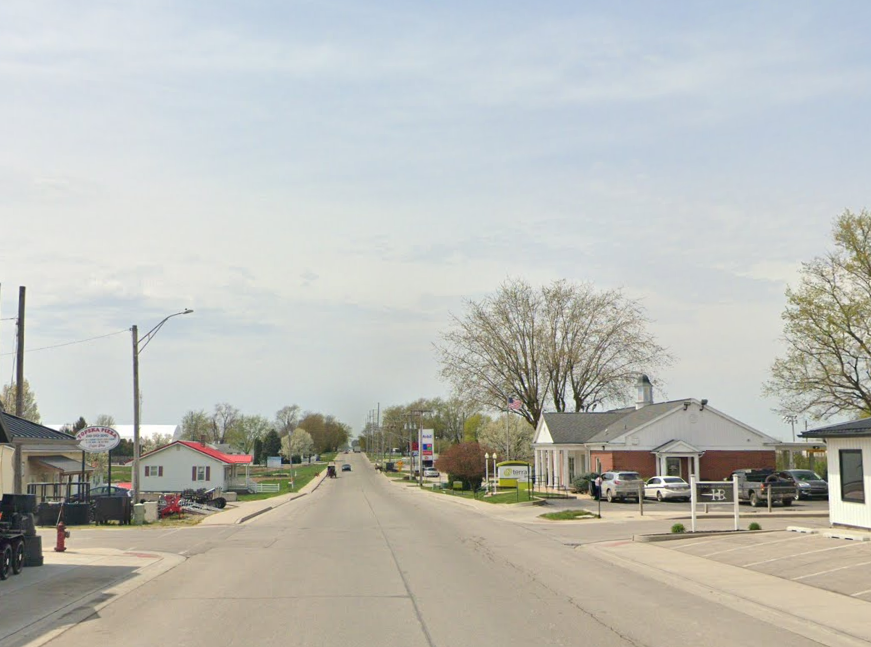
Topeka, a quaint town of about 1,200 residents, offers a glimpse into a simpler way of life that I find both refreshing and enlightening. The strong Amish presence here means you’ll often see horse-drawn buggies sharing the road, and local businesses reflect traditional craftsmanship.
Visiting Topeka, I enjoy exploring the Amish-owned shops and markets, where you can find handmade furniture, quilts, and baked goods that are simply delightful. The town’s economy revolves around agriculture and artisan trades, contributing to its timeless tranquility.
Where is Topeka?
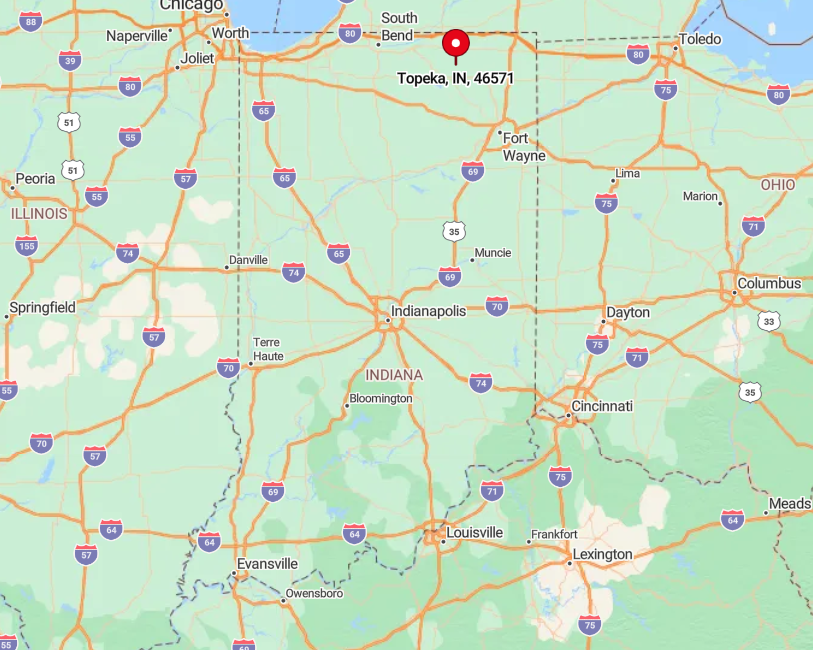
Nestled in LaGrange County in northeastern Indiana, Topeka is comfortably removed from the state’s urban centers. Its location amidst rolling farmlands and lack of major highways nearby reinforce its peaceful setting.
I usually reach Topeka by taking State Road 5, enjoying the serene countryside views along the way. The town’s commitment to traditional ways of living and its expansive rural backdrop make it a unique and secluded destination for those looking to step back in time.
5. Walkerton: Seclusion Amidst Nature
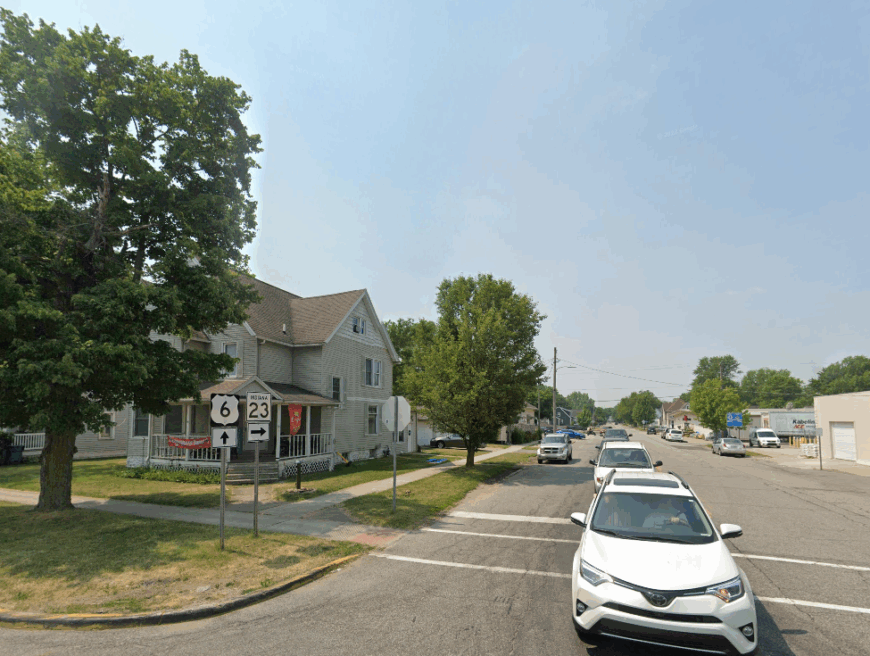
Walkerton, home to around 2,100 people, is a quiet town that I often escape to when I need to reconnect with nature. Surrounded by woodlands and wetlands, it’s a haven for outdoor lovers like me.
The nearby Kankakee Fish and Wildlife Area offers excellent opportunities for fishing, hunting, and birdwatching. The town’s laid-back atmosphere is complemented by friendly local diners and shops that give you a taste of small-town charm.
Where is Walkerton?
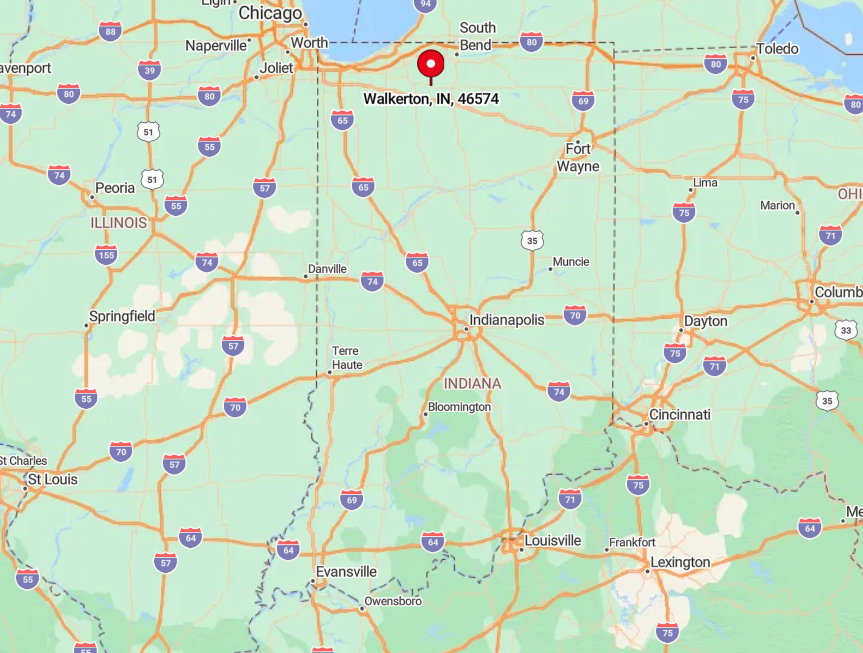
Located in St. Joseph County, just south of South Bend, Walkerton sits away from the main thoroughfares, adding to its sense of seclusion. I find that taking State Road 23 gets me there through scenic routes lined with trees and fields.
The surrounding natural features, including the wetlands and sparse population, make Walkerton feel like a hidden retreat. It’s the kind of place where you can truly unwind, far from the clamor of city life.
4. Kouts: Hidden in the Heartland
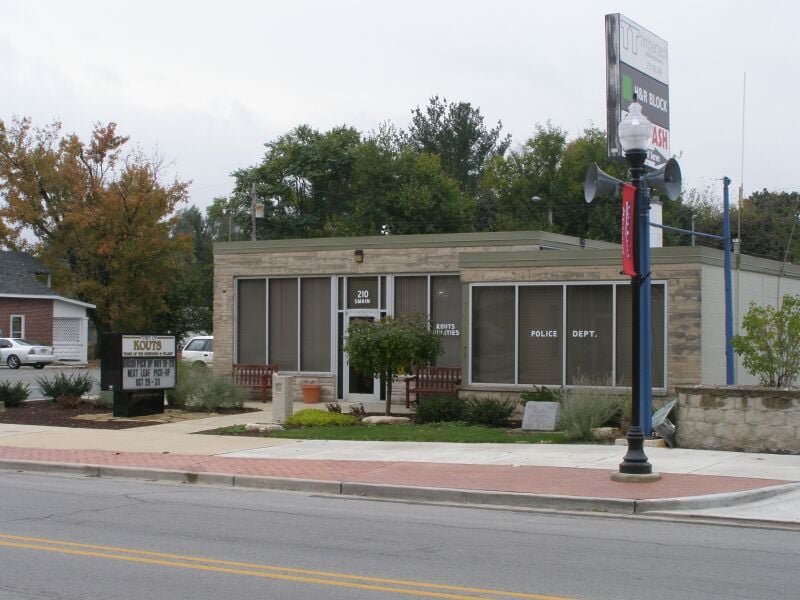
Kouts is a small town of nearly 2,000 residents that offers the quintessential rural Indiana experience. I particularly enjoy the vast open spaces and agricultural landscapes that define the area, creating a peaceful environment that’s perfect for relaxed living.
The annual Pork Fest is a local highlight, showcasing community spirit and small-town festivities that I find endearing. Agriculture is the mainstay of Kouts’ economy, reinforcing its rural character and close-knit community feel.
Where is Kouts?
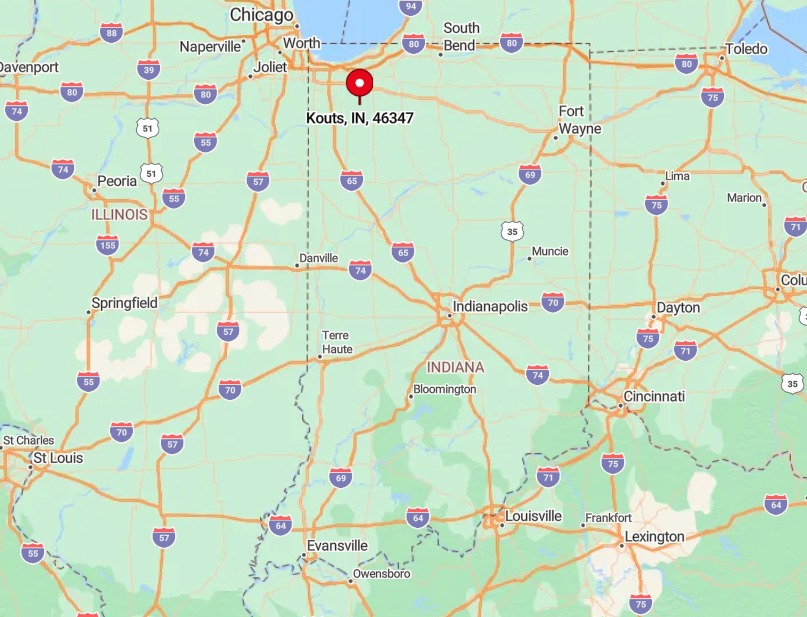
Situated in Porter County in northwestern Indiana, Kouts is nestled away from the busier neighboring towns and cities. Getting there usually means taking State Road 49 and then meandering through quiet country roads, which I find quite relaxing.
The town’s location, surrounded by extensive agricultural fields and away from major highways, contributes to its hidden-in-the-heartland vibe. It’s a place where you can truly appreciate the simplicity and tranquility of rural life.
3. Bristol: Riverside Serenity
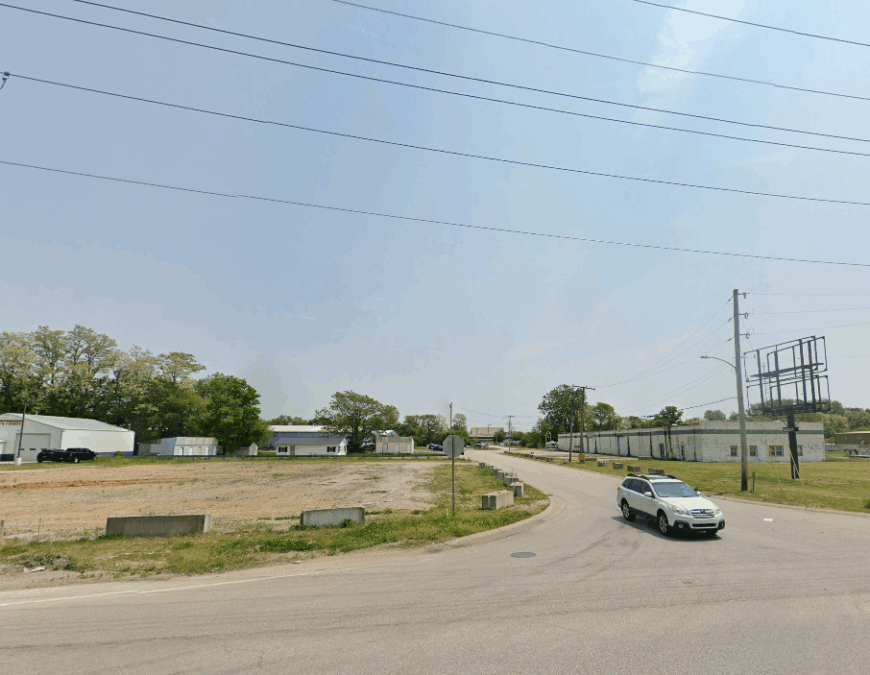
Bristol, with a population of about 1,700, sits gracefully along the Elkhart River, offering a serene escape that I can’t resist. The town’s riverside parks are perfect for picnics, fishing, or simply watching the water flow by.
One of my favorite activities is exploring the Bonneyville Mill County Park nearby, which offers scenic hiking trails and a historic grist mill. Manufacturing and small businesses support the local economy, but Bristol has managed to retain its quaint charm with minimal development encroaching on its natural beauty.
Where is Bristol?
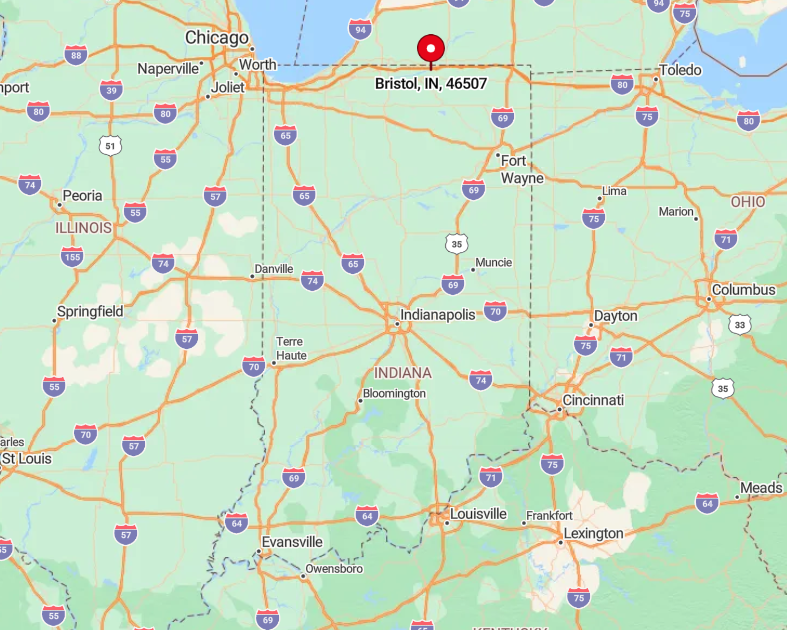
Located in Elkhart County, Bristol is conveniently situated yet feels worlds away from the hustle of larger towns. It’s just off the Indiana Toll Road (I-80/I-90), but once you exit, the peaceful rural roads lead you into the heart of this tranquil community.
I appreciate how the town’s proximity to the river and surrounding green spaces amplifies its secluded ambiance. While it’s accessible, Bristol’s minimal traffic and emphasis on preserving natural areas make it feel like a peaceful retreat.
2. LaGrange: A Quiet Lakeside Escape
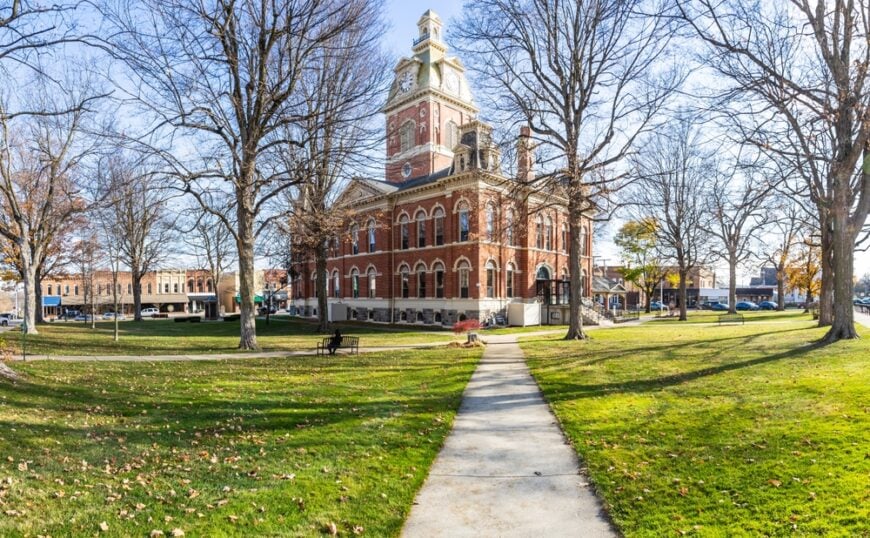
LaGrange, the county seat of LaGrange County, has a population of around 2,600 and offers a restful ambiance that I’ve come to love. The town is surrounded by serene lakes and lush forests, making it an ideal spot for outdoor activities like fishing, boating, and hiking.
The Dallas Lake Park is a personal favorite, where I can spend the day by the water without the crowds. LaGrange’s economy is a blend of agriculture, small businesses, and Amish craftsmanship, adding to its unique charm.
Where is LaGrange?
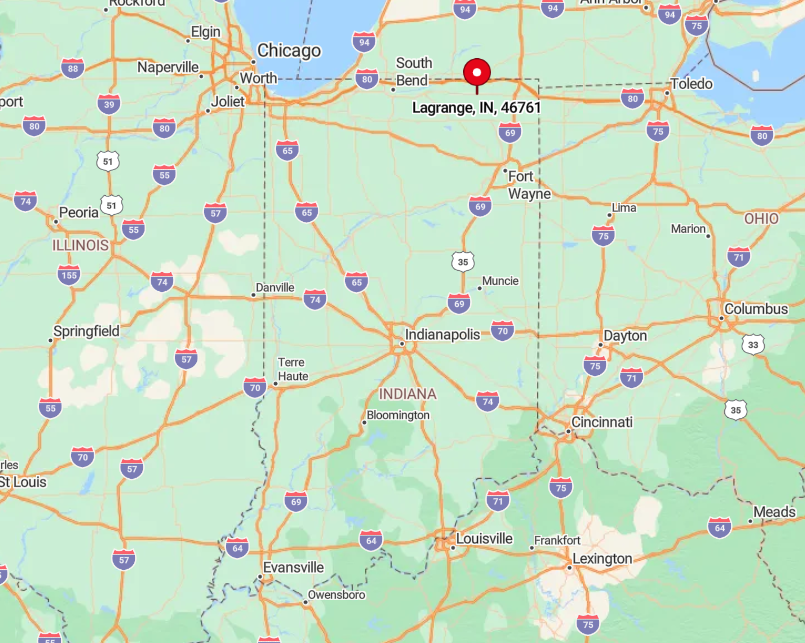
Nestled in northeastern Indiana near the Michigan border, LaGrange is off the main tourist trails, enhancing its quiet atmosphere. I usually take State Road 9 to reach it, enjoying the scenic drive through Amish country and past rolling farmlands.
The town’s location, away from major urban centers and enveloped by natural beauty, contributes to its sense of seclusion. It’s a place where life moves at a gentler pace, allowing you to truly unwind.
1. Shipshewana: The Heart of Amish Country
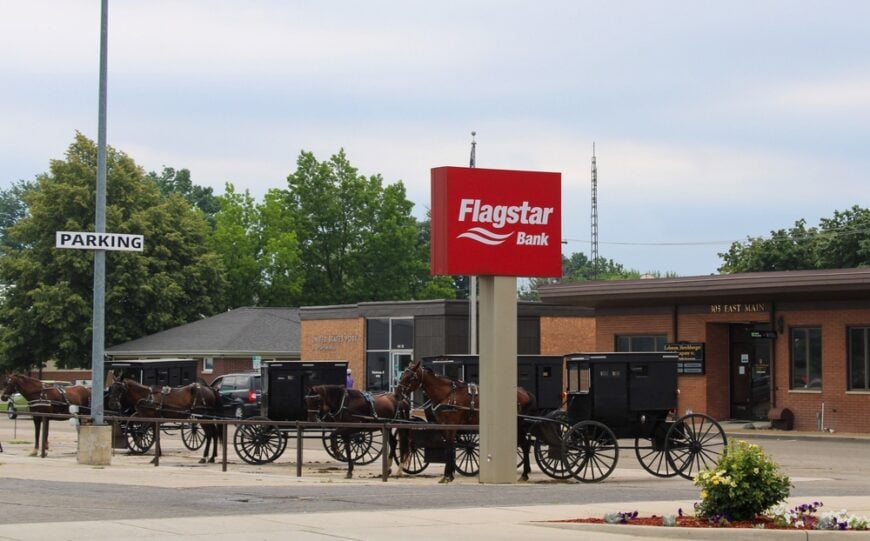
Shipshewana, with a population of just over 700, is a small town that holds a special place in my heart. Known for its rich Amish heritage, it’s a place where horse-drawn buggies are a common sight and life seems wonderfully uncomplicated.
I’ve spent hours exploring the famous Shipshewana Flea Market and Auction, where you can find everything from antiques to handcrafted goods. The town offers peaceful countryside views, charming shops, and delicious homemade treats that make every visit memorable.
The main industries revolve around tourism, agriculture, and Amish craftsmanship. What makes Shipshewana truly secluded is its serene rural setting and the traditional lifestyle embraced by its residents, offering a genuine escape from the modern world’s hustle.
Where is Shipshewana?
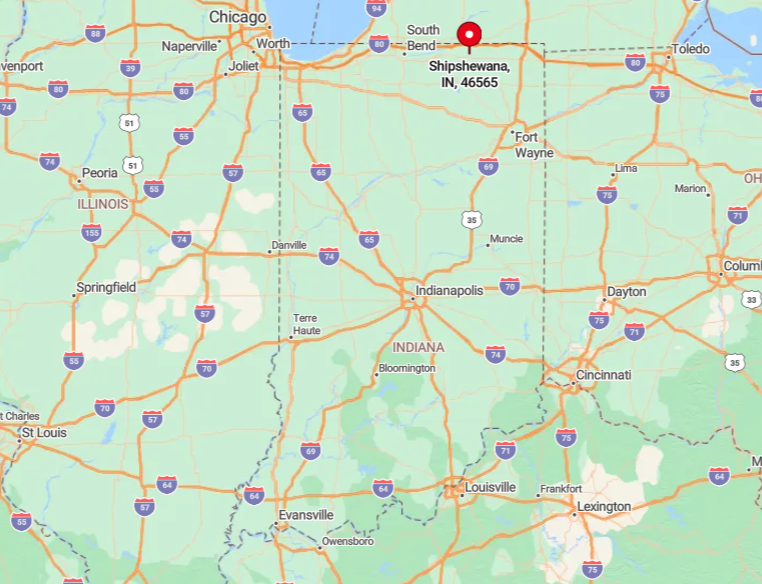
Situated in LaGrange County in northern Indiana, Shipshewana is nestled amidst rolling farmlands and picturesque landscapes. Its location off State Road 5, distant from major highways, contributes to its tranquil feel.
Getting there involves a scenic drive through the countryside, which I always find refreshing. The town’s commitment to preserving its Amish traditions and the surrounding open spaces make Shipshewana a uniquely secluded destination that invites you to slow down and savor the simple joys of life.






